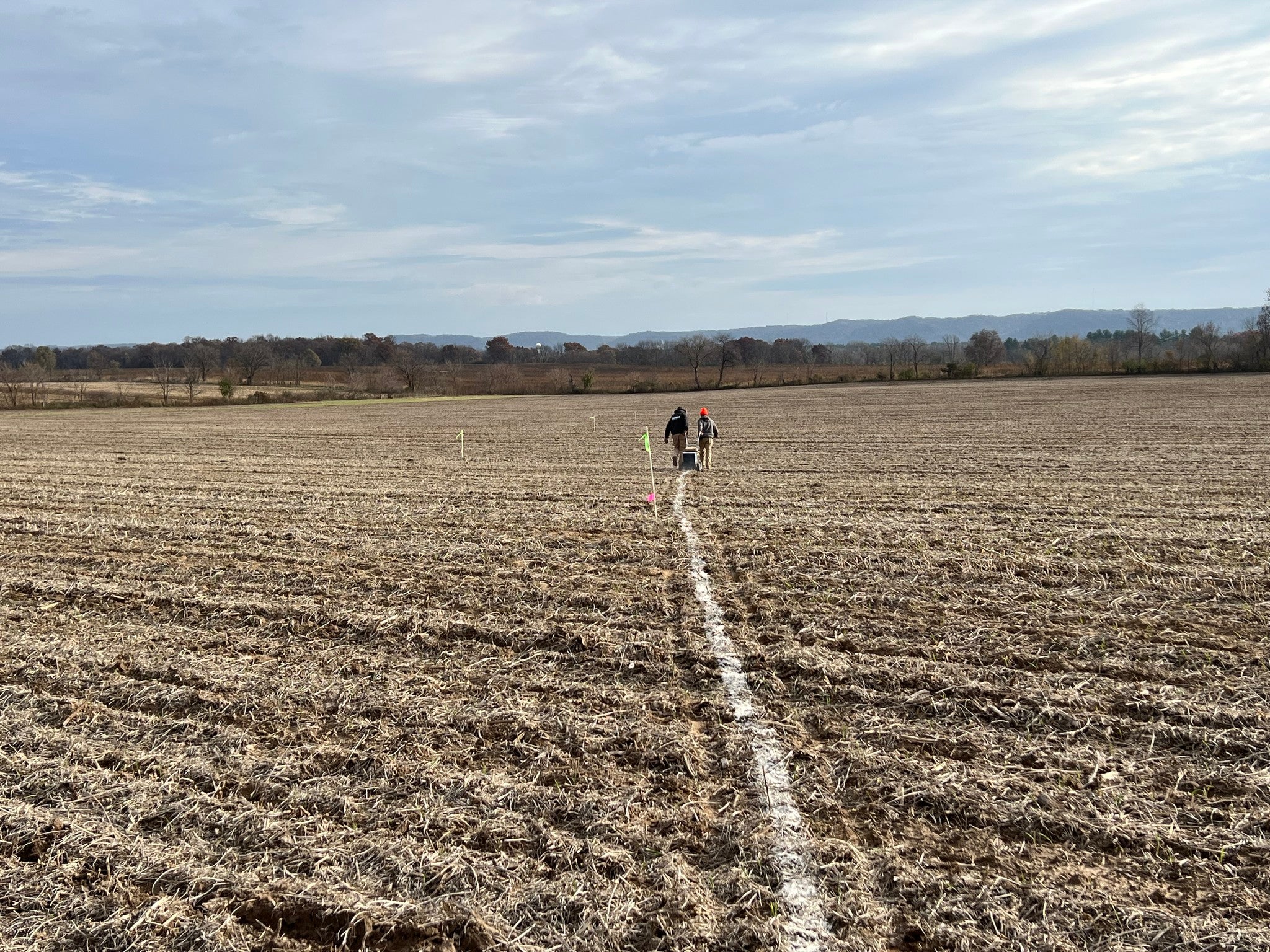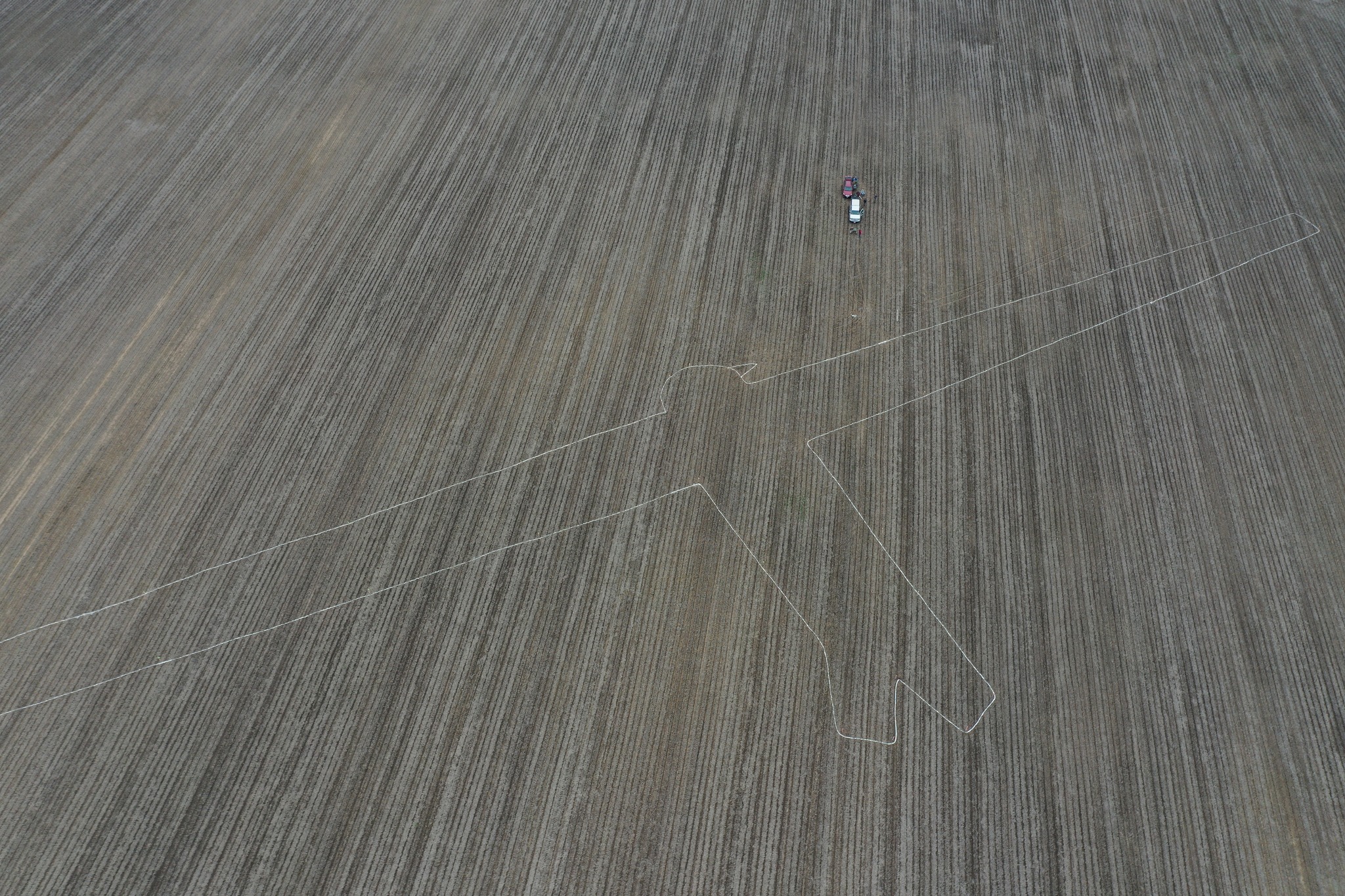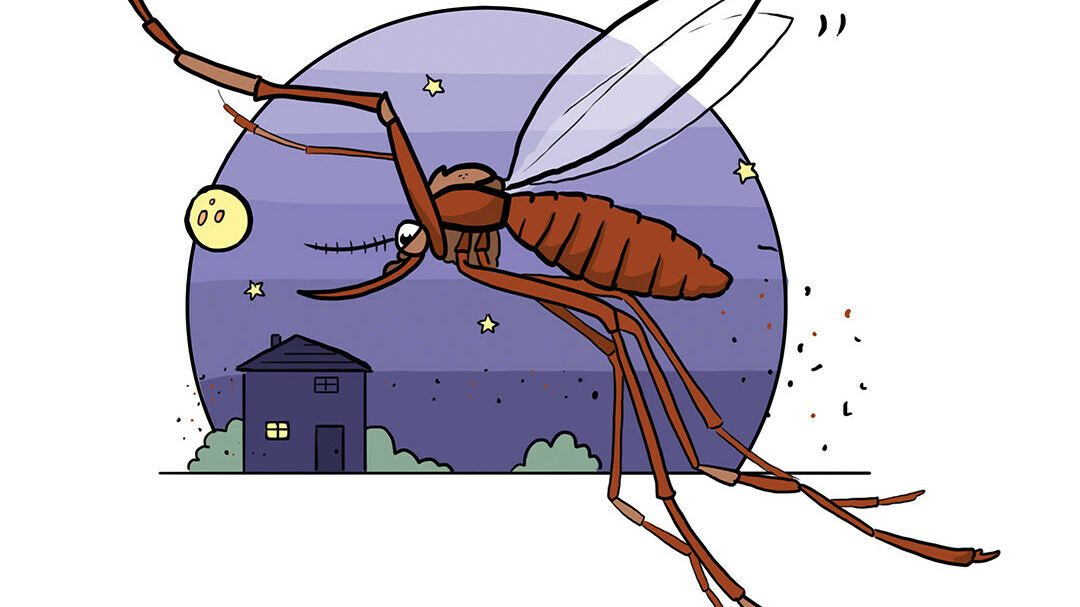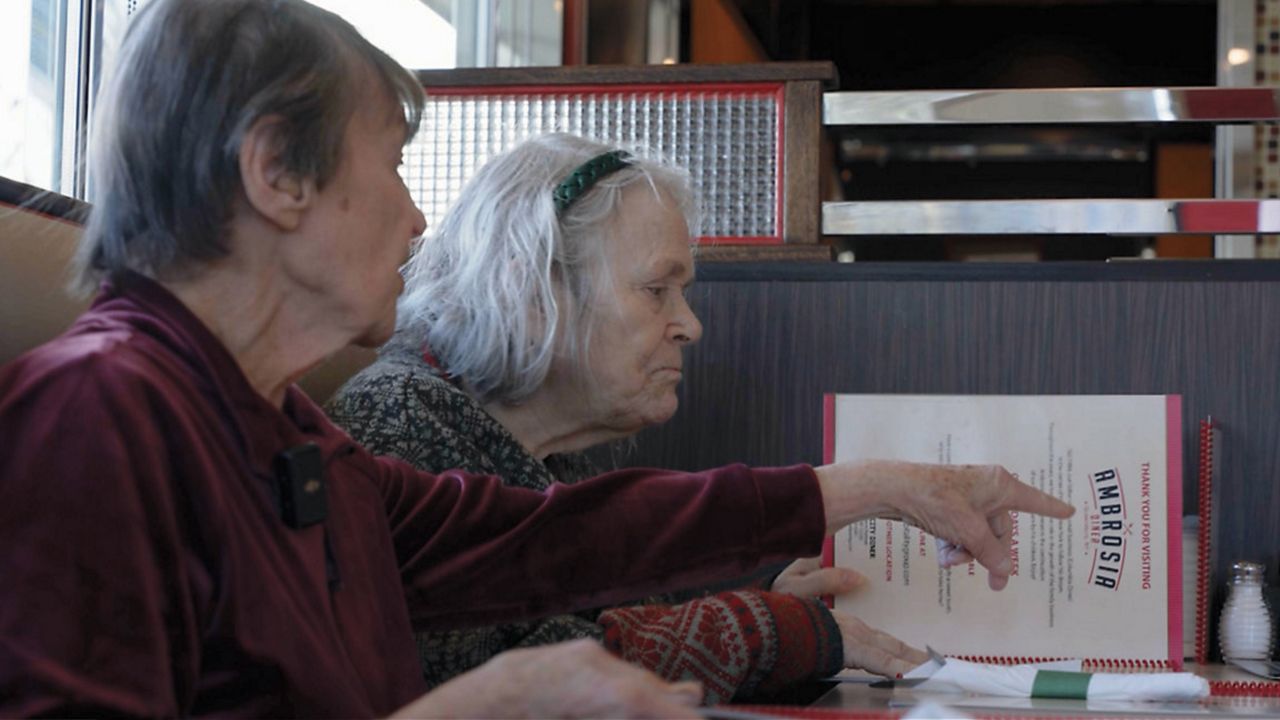Wisconsin
Father and son preserve the legacy of Wisconsin’s effigy mounds

When Ho-Chunk elder Ritchie Brown started traveling around Wisconsin to see effigy mounds decades ago, he couldn’t have been in a better place.
“Wisconsin is unique in that we’re about the only place in the country that has effigy mounds,” Brown said in a recent interview on WPR’s “Wisconsin Today.”
Effigy mounds are constructions of raised earth built by Indigenous peoples of the region likely between A.D. 750 and 1200. While some of these mounds are burial sites, others serve ceremonial purposes.
Stay informed on the latest news
Sign up for WPR’s email newsletter.
Mounds can have linear or organic shapes, but what makes effigy mounds unique is that they often take the form of different animals or spiritual entities.
“I’ve seen fox mounds, otter mounds, eagle mounds, bear mounds,” Brown said. “You name it, they’re out there.”
Brown took an interest in the mounds in the late 1980s after visiting the farm of the late Frank Shadewald in Muscoda. Shadewald had asked for help identifying unique shapes of raised earth he’d found on his property, and Brown came to investigate as a manager at the Ho-Chunk Department of Natural Resources.
“When I first started surveying these and looking at all these mounds, I was really interested and fascinated,” Brown said. “But I didn’t know half the story then.”
Since then, Brown has spent decades traveling all over Wisconsin, Minnesota, Iowa and even Canada to identify, survey and mark the mounds, which hold special significance to the Ho-Chunk Nation and other tribes.
And as often as he could, he took his son, Casey, along for the ride.
“I’ve been following (my dad) around since I was a little kid,” Casey said. “Other kids used to say, ‘Yeah, I played baseball with my dad or built things,’ but what we were doing was very different.”
Casey admits he didn’t fully appreciate the significance of the mounds when he was younger.
“I knew that it was important and that we were tromping around the woods for some reason,” he said. “As I’ve grown older, the mounds mean different things to me.”
After clinching a Midwest Regional Emmy last year, Casey is now working on a documentary film about the mounds and his father’s work.
Rather than focusing on the archaeology of the mounds, he wants to bring an Indigenous perspective to the project. For Casey, that means moving through the seasons because of how the visual experience and cultural meaning of the mounds changes throughout the year.
“A lot of these sites are aligned with different times,” the elder Brown explains. “And the interesting part about that is the stories that go with them.”
The father-son duo indeed have many stories to share, from traveling to the mounds with Ho-Chunk traditional court leaders on a casino bus to being at a mound site during a particularly spectacular sunset.
“The majesty of the mounds is hard to transfer just by a picture or even a film or video,” Casey said.
Despite that, he hopes the documentary will bring some of the experience to viewers and educate people about what went into creating these earthworks, as he calls them.
Ritchie and Casey’s latest work has taken them back to Muscoda, where they recently marked two mounds, including a rare and culturally significant ghost eagle that spans around 700 feet.

This moment has been a long time in the making.
“(My dad) has been waiting decades to mark these mounds,” Casey wrote in a Facebook post.
It can take a long time to do this survey work because the mounds are often found on the private property of non-Native farmers and landowners. Some of these landowners are very willing to work with the Browns and their team, but in other cases, it can be challenging to get direct access to the mounds for marking them or even filming them.
Casey says the work is about building relationships. Some of the farming families have been there for generations.
“They have their own stories now,” he said. “And those are just as important.”
For both Casey and his father, they see themselves as caretakers of the mounds, to preserve their history and legacy for current and future generations.
“We’re Bear Clan, so we take care of the Earth,” Casey explained.
“I want to be able to share this stuff with the younger generation,” the elder Brown said. “They need something to hang on to just to guide them through everything that’s going on today.”
Wisconsin Public Radio, © Copyright 2024, Board of Regents of the University of Wisconsin System and Wisconsin Educational Communications Board.

Wisconsin
COLUMN: What’s the Buzz? It’s Summer in Wisconsin

My wife and I were sitting in our living room, engaging in the Mobius strip of Netflix scrolling. We had survived the eight months of winter and relished the 23 hours of spring. The weather alert on our computer advised that the night was to be clear with a full moon.
“Hey, Jane. Let’s take a romantic walk. It’s supposed to be lovely tonight.”
“Let me just grab my coat.”
“Jane, it’s June.”
“Right. I’ll grab a scarf, too.”
We stepped outside, and to our surprise, it was completely overcast. I guess the weather forecast was wrong. But then I heard the ominous, spine-tingling humming.
“Jane, run for it!” But I was too late. The cloud of mosquitoes had already latched onto her and was airlifting her back to Half Moon Lake.
As anyone who lives here knows, we have an overabundance of blood-sucking vermin in Wisconsin. In fact, Eau Claire would be an ideal place for a medieval barber to practice medicine. I imagine it would go something like this:
Barber: What seems to be the problem?
Peasant: It’s my son. He’s got a touch of the Black Death.
Barber: Well, that’s going around. What your son needs is a good blood letting.
Peasant: That makes sense. Should I bring him to your office?
Barber: No need. Just have him take a hike at Lowes Creek Park near sunset. Here’s your bill. You owe me two chickens and a dead cat.
Peasant: Dead cat? Why do you need a dead cat?
Barber: I can’t tell you. I’m not allowed to reveal the secrets of the pharmaceutical industry.
It makes me wonder why I still live in Eau Claire. Recently, my wife and I flew out to California to visit our friends, Lew and Mary Ann. They didn’t have any mosquitoes. They had clouds of Monarch butterflies. Butterflies! I was wandering under their lemon trees while they and my wife lounged on the deck, unbothered by any biting insects. As I joined them on their deck, I started to strip down.
Lew: Um, what are you doing?
Me: I walked through some tall grass, so you know the routine.
Lew: No. No, I do not.
Jane: I have to look for bullseyes.
Lew: Bullseyes on his back?
Jane: Yes.
Lew: Little paranoid, aren’t you?
Me: Not where ticks are concerned.
Lew: Oh, we don’t have ticks.
Me: You … don’t have ticks? So, no Lyme’s Disease?
Lew: Lyme’s disease? Is that something you get from drinking too many margaritas?
I found their ignorance of blood-borne pathogens wonderfully refreshing. I looked at all of the pluses for living in California: no winters, close to the Pacific Ocean, and fewer chances of dying from a lingering illness. I had to move to California!
Me: I want to be your new neighbor. How much is a house here?
Lew: Our house is worth $1.3 million.
Me: $1.3 million? But, but, your house is SMALLER than our house in Wisconsin!
Lew: That’s the going rate.
We flew back to Wisconsin with a greater appreciation for our hometown after all. Jane and I sat on the back patio of our house that was one-eighth the price of a house in California. A mosquito landed on my tricep and plunged his proboscis into my soft tissue. I smiled at her benevolently and said, “God bless you, my little housing market deflator.” SMACK. “Rest in peace.”
Wisconsin
Wisconsin goats eat invasive plants in Calumet woods

CALUMET, Mich. (WLUC) – Goats grazed in Calumet’s Swedetown Recreation Area forests on Saturday morning,
The Keweenaw Invasive Species Management Area (KISMA) works with the Houghton, Hancock, and the Keweenaw tri-county area to stop invasive species from growing. Families were invited to greet the goats from a Wisconsin farm. The goats are part of the Regenerative Ruminants service, which provides a group of goats that clear brush. People could also learn about the invasive glossy buckthorn. Researchers said the plant can take over a native forest habitat.
KISMA coordinator and Michigan Tech University researcher assistant professor Sigrid Resh said native species don’t eat the plant. She also calls the glossy buckthorn a “woody invasive” species, she also mentions how it displaces the native hardwood forests. Her team is in its second year of the research project, deciding whether goats can eat buckthorn. Resh hoped to find a different way to combat invasive plants instead of using chemicals like pesticides. She said even the plants people bring into their gardens impact the woods.
“Japanese barberry, that’s used as a landscaping species, can still be bought at places like Walmart,” Resh said. “Those are escaping your yard and coming into our forests and changing the habitat.”
She said people can help at home by replacing invasive plants with native ones.
Copyright 2024 WLUC. All rights reserved.
Wisconsin
Coalition aims to protect Wisconsin seniors from abuse, financial exploitation

WISCONSIN — Hundreds of thousands of dollars are headed to Wisconsin to help curtail issues tied to elder abuse, as the University of Wisconsin-Green Bay works with the Wisconsin Department of Justice and other agencies to strengthen the Elder Justice Coalition in Wisconsin.
“[We’re] working to protect older adults from financial exploitation and from abuse and neglect,” said Laura Nolan, the executive manager for business and government outreach at UW-Green Bay. “There’s a variety of programs that we are utilizing our resources for to really help strengthen what we have here in Wisconsin, bringing together the people who care about helping older adults — law enforcement, banking entities, our state resources — and really trying to tackle a problem that has a huge impact on our older adults.”
According to UW-Green Bay, data from the U.S. Census Bureau revealed nearly 26% of Wisconsin’s population will be 60 and older by 2030, and scammers aim to pounce.
“The scammers are really good,” Nolan said. “We shouldn’t feel embarrassed if we fell for a scam. The most important thing to do is to actually get that help right away: Report it to the police, talk to your financial institution [and] the FBI has a hotline where you can report it and get extra help — so there are a lot of resources and help out there.
Watch the full interview above.
-

 News1 week ago
News1 week agoIsrael used a U.S.-made bomb in a deadly U.N. school strike in Gaza
-

 World1 week ago
World1 week agoFrance to provide Ukraine with its Mirage combat aircraft
-

 World1 week ago
World1 week agoRussia-Ukraine war: List of key events, day 833
-

 Movie Reviews1 week ago
Movie Reviews1 week agoInsane Like Me? – Review | Vampire Horror Movie | Heaven of Horror
-

 News1 week ago
News1 week agoNonprofit CFO Accused of 'Simply Astonishing' Fraud
-

 Politics1 week ago
Politics1 week agoGeorge Clooney called White House to complain about Biden’s criticism of ICC and defend wife’s work: report
-

 Politics1 week ago
Politics1 week agoNewson, Dem leaders try to negotiate Prop 47 reform off California ballots, as GOP wants to let voters decide
-

 World1 week ago
World1 week ago‘Bloody policies’: Bodies of 11 refugees and migrants recovered off Libya













